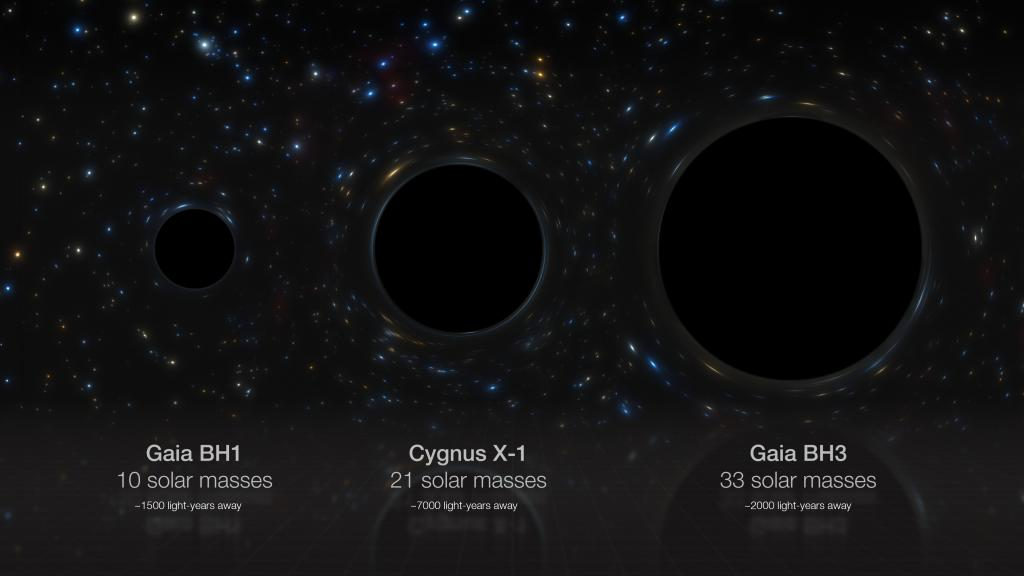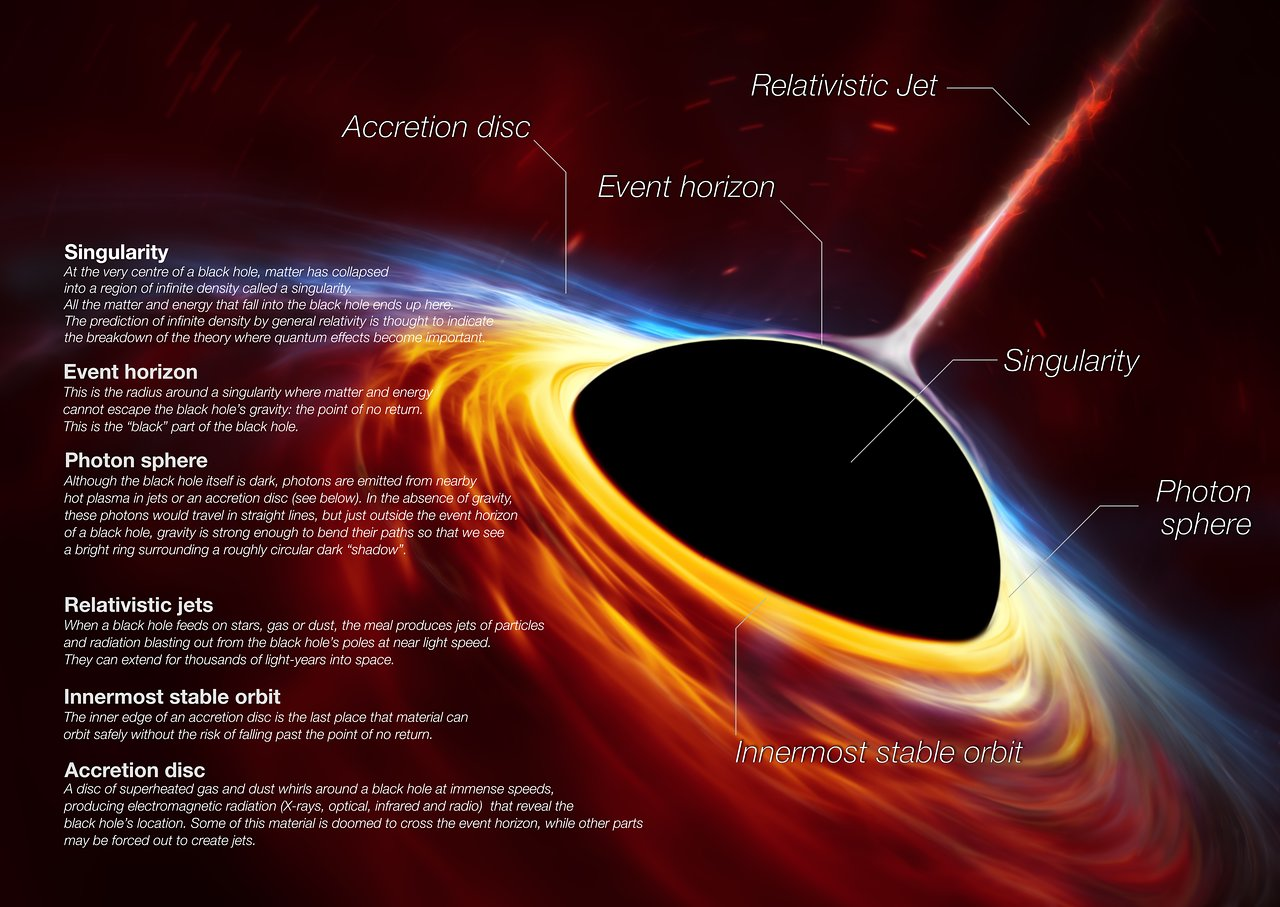Black Hole Gaia BH3 | 08 May 2024
Why in News?
Recently, astronomers have discovered a massive Black Hole in our Galaxy, named “Gaia BH3”.
- It’s the 2nd-closest known Black hole to Earth. It is 33 times heavier than the sun and the most massive black hole of stellar origin in the Milky Way, surpassing Cygnus X-1.
- Stellar black holes are formed as a result of the collapse of a single star.
What are Black Holes?
- About:
- Black holes are extraordinarily dense objects with gravity so strong that not even light can escape, making it difficult to spot them.
- They are formed when a massive star collapses in on itself at the end of its life, creating an incredibly dense object with a gravitational pull that is so strong that it warps space-time around it.
- Types of Black Holes:
- Stellar Black Hole: It is formed by the collapse of a single massive star.
- Intermediate Black Hole: Their masses are between 100 and 100,000 times that of the sun.
- Supermassive Black Hole: Their masses ranging from millions to billions of times that of the sun, found at the centres of most galaxies including our own Milky Way galaxy.
What is a Galaxy?
- A galaxy is a huge collection of gas, dust, and billions of stars and their solar systems, all held together by gravity.
- Earth is the part of the Milky Way Galaxy, which also has a super Massive Black Hole named Sagittarius A at it’s centre whose mass is about 4 million times that of suns.
UPSC Civil Services Examination, Previous Year’s Question
Q. Recently, scientists observed the merger of giant ‘blackholes’ billions of light-years away from the Earth. What is the significance of this observation? (2019)
(a) ‘Higgs boson particles’ were detected.
(b) ‘Gravitational waves’ were detected.
(c) Possibility of inter-galactic space travel through ‘wormhole’ was confirmed.
(d) It enabled the scientists to understand ‘singularity’
Ans: (b)
Q. Consider the following phenomena: (2018)
- Light is affected by gravity.
- The Universe is constantly expanding.
- Matter warps its surrounding space-time.
Which of the above is/are the prediction/predictions of Albert Einstein’s General Theory of Relativity, often discussed in the media?
(a) 1 and 2 only
(b) 3 only
(c) 1 and 3 only
(d) 1, 2 and 3
Ans: (d)


